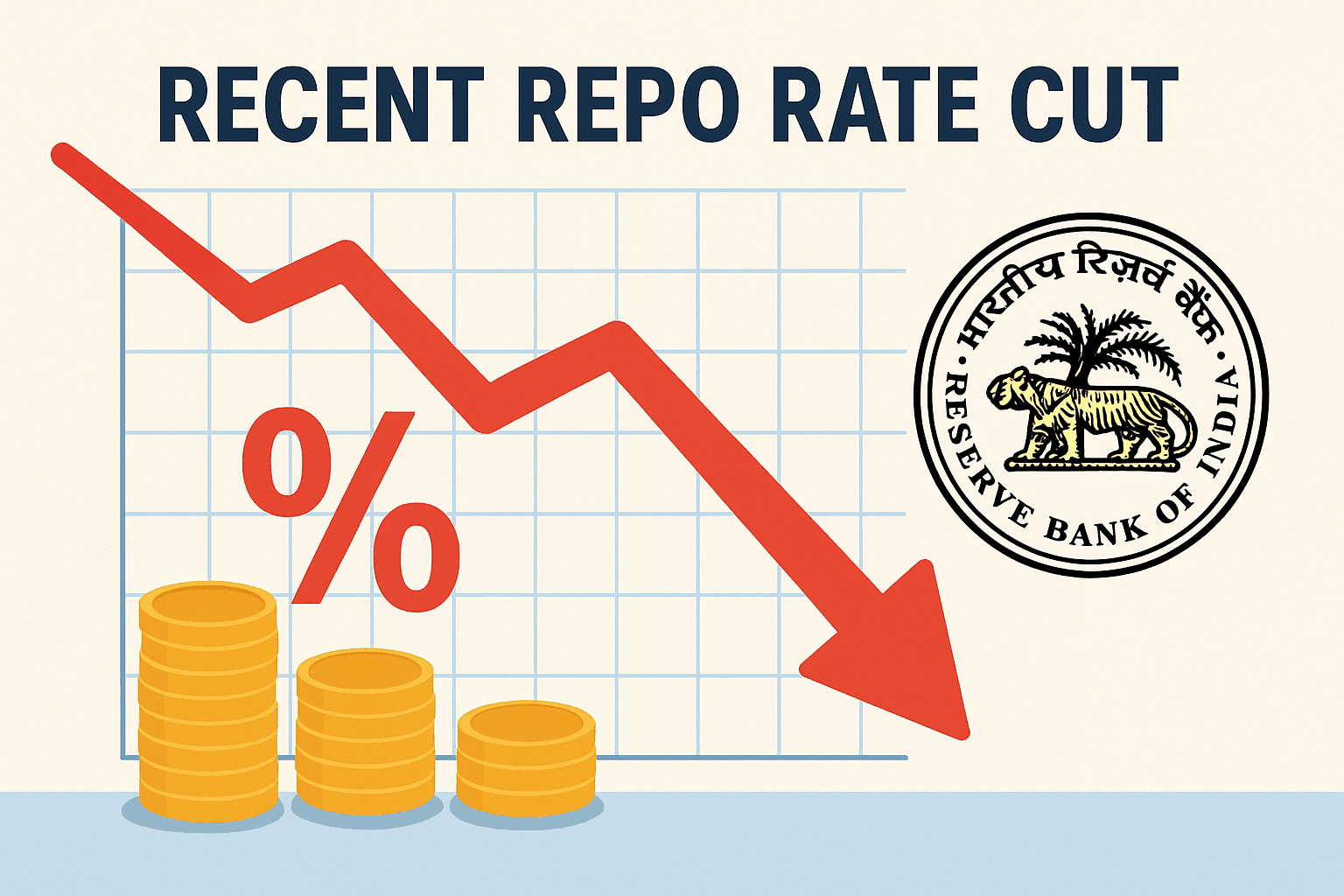RBI May Cut Repo Rate Again: SBI Research Predicts Cheaper Loans Soon
Explore how SBI Research forecasts a potential "RBI repo rate" cut, what it means for borrowers, and how loan affordability may improve in the coming months. Stay updated on India’s monetary policy and borrowing costs.
RBI May Cut Repo Rate Again: SBI Research Suggests Loans Could Become Cheaper
The Reserve Bank of India (RBI), in its ongoing efforts to manage the country’s monetary policy, may be on the verge of cutting the repo rate once again, according to an insightful report from SBI Research. This anticipated move could bring a wave of relief to borrowers by reducing the cost of loans, stimulating economic growth, and supporting sectors struggling with higher borrowing costs.
As a critical indicator for lending rates, any change in the repo rate has widespread implications for individuals, businesses, and the overall economy.
What is the Repo Rate and Why Does it Matter?
The repo rate is the interest rate at which the RBI lends short-term funds to commercial banks. It serves as a benchmark for banks when setting interest rates on various loans, including home loans, personal loans, and business credit.
RBI May Cut Repo Rate Again:
When the RBI lowers the repo rate, banks can borrow money more cheaply from the central bank, which often leads to lower interest rates for borrowers.
Conversely, an increase in the repo rate can result in more expensive loans as banks pass on the cost.
SBI Research’s Outlook on the Repo Rate
The State Bank of India’s research wing recently analyzed multiple economic indicators such as inflation trends, GDP growth outlook, fiscal conditions, and global economic uncertainties. Based on their model and ongoing RBI communication, SBI Research predicts a possible repo rate cut during the upcoming Monetary Policy Committee (MPC) meeting.
Several factors are tilting RBI’s stance towards easing rates:
Moderating inflation levels within the target range.
Signs of a gradual slowdown in economic growth.
The need to boost consumption and investment through cheaper credit.
Global central banks easing policies, creating a conducive external environment.
How Will the Repo Rate Cut Affect Borrowers?
If the repo rate is cut, borrowers across the spectrum can expect a decline in interest rates on loans, making borrowing more affordable.
Here’s how it impacts different borrowers:
Homebuyers: Mortgage rates usually follow repo rate changes, making home loans cheaper and stimulating real estate demand.
Businesses: Lower interest on working capital and term loans can increase cash flow, encourage expansion, and improve profitability.
Consumers: Reduced EMI burden on personal loans and consumer credit can enhance household disposable income.
Impact on Different Loan Types
| Loan Type | Current Scenario | Post Repo Rate Cut Scenario |
|---|---|---|
| Home Loans | Interest rates moderately high due to repo | Expected to decrease by 0.25% to 0.50% |
| Personal Loans | Higher interest rates due to risk factor | Moderate reduction, easing EMI payments |
| Business Loans | Costlier credit impacting expansions | Cheaper loans stimulate business investment |
| Auto Loans | Tied closely to benchmark rates | Lower cost improves affordability |
Broader Economic Implications
A rate cut aligns with RBI’s balancing act between controlling inflation and supporting growth. Lower borrowing costs generally encourage higher spending and investment, which can accelerate GDP growth. It may also improve credit off-take from banks, benefitting sectors like manufacturing, retail, and real estate.
However, RBI also has to watch inflation closely. Any surge following rate cuts could impede benefits, forcing a recalibration.
Stakeholders are thus closely watching inflation data, crude oil prices, and foreign capital flows as key signals for future monetary action.
Recent RBI Rate Actions and Market Sentiment
The RBI has maintained a cautious stance since mid-2025, raising rates marginally amidst inflation spikes due to supply-side shocks and geopolitical tensions. However, recent data suggest inflation pressures are easing, and economic momentum is slowing. SBI’s report adds to mounting speculation that RBI could return to an accommodative stance soon.
Market reactions are also favorable—bond yields have dipped, and banks have already started signaling a willingness to pass on rate cuts to customers, building optimism among borrowers.
What Should Borrowers Do Now?
For individuals and businesses considering new loans or refinancing existing ones, this is a crucial time to stay informed:
Track RBI announcements: The Monetary Policy Committee typically meets every two months; official decisions are widely reported.
Compare loan offers: Banks may compete to offer attractive interest rates following a repo rate cut.
Consult financial advisors: Assess your loan eligibility and plan for possible EMI reductions.
Consider refinancing: If current loan rates are high, refinancing could lower your interest burden post rate cut.
Conclusion
SBI Research’s forecast of an imminent RBI repo rate cut has significant implications for India’s borrowing landscape. Cheaper loans could boost consumption, investments, and overall economic growth. However, the final decision depends on RBI’s assessment of inflation and growth data in the coming weeks.
Borrowers and investors should monitor the central bank’s signals closely to make well-informed financial decisions.
